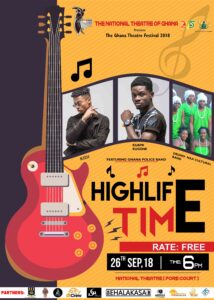The constant influx of Europeans since the 15th century introduced the indigenous population to hymns, shanties, and marches, and as the Ashanti people organized and attempted the uprising which resulted in the War of the Golden Stool, a musical tradition was born, and the seeds of Ghana’s identity were sown.
Highlife is a music genre that originated in Ghana at the turn of the 20th century and the international interest in Africa’s Gold Coast, as it was known. This music incorporated the traditional harmonic 9th, as well as melodic and the main rhythmic structures in traditional Akan music, and married them with Western instruments and ideas.
Highlife was associated with the local African aristocracy during the colonial period. Highlife spread to Sierra Leone, Liberia, Gambia and Nigeria via Ghanaian workers, among other West African countries, by the 1930s.
Though the Ashanti uprising against the British was initially unsuccessful, it was their assertiveness which led to the creation of an art powerful enough to hide in plain view what it was intended to express. The Ashanti people wanted to be free and this shared objective gave rise to a musical union. Traditional African instruments such as the seperewa harp-lute and the gankogul bell were combined with European harmonies and guitars as people expressed themselves through song. Perhaps, even the appearance in which the genre took its name is indicative of the cultural displacement effected upon the colonizing forces.

The National Theatre Of Ghana is a popular venue for Highlife Concerts
With the failed uprising behind them and no opportunity for self-governance forthcoming, attention was given to social matters and the formation of strata. As it became fashionable for people to be seen in certain hotels with certain bands playing, the media and fledgling record companies attached an aspirational label to the by-then sonically defined genre. The music was not simply part of “living the highlife,” it was, in itself, Highlife. The self-confidence of bands and musicians took off and has continued for generations, allowing the evolution of the form. In the wake of the Second World War, jazz, blues, reggae, and even funk influences gave rise to acts like Osibisa, and Ignatius Kutu Acheampong, carried Highlife beyond Africa and into the living rooms of the world. The undeveloped state of the economy in the 1970s made it challenging to export the Highlife genre and capitalize on interest but by the 90’s it began to break out.
It is very popular in Liberia and all of English-speaking West Africa, although little has been produced in other countries due to economic challenges brought on by war and instability. The prevailing popularity of traditional artists like Koo Nimo, King Sunny Ade despite the influx of American influence in the 1990s, shows that the affinity with the sound transcends the normally fickle forces that guide the music industry.
Highlife is characterized by jazzy horns and multiple guitars which lead the band. Recently it has acquired an uptempo, synth-driven sound. Igbo highlife and Joromi and Hiplife are sub-genres.
